The Hide Installation + Sculpture Showcase
8th + 9th / 15th + 16th JUNE - 11am-6pm
PRESS
a-n, The Artists Information Company
Now Showing: Summer must-see exhibitions and events
The Floating Circle, Art magazine from the Friends of the RWA
The Hide Installation and Sculpture Showcase (THISS) – June 2024
Good on Paper
Exhibition Space, The Hide Installation and Sculpture Showcase
This year The Hide will be showcasing the work of eight established woman artists whose practices align around themes of transience and impermanence.
The artists come from London, the South East and West of England as well as Stroud.
THISS 2024 will include performance, site responsive work, sustainability, elemental influence, and structures on the point of collapse.
The selected artists all consider the amount of ‘stuff’ in the world, so they re-cycle and re-use to make ideas visible, and their actions are un -monumental and economic, often rooted in their bodies or in nature. Their work, repeats, shimmers, dissolves, and passes through their breath.
The exhibition is curated by Alice Sheppard-Fidler, who approaches the role of curator as a caretaker of work and ideas, encouraging artists to take risks and explore a dialogue between their practice’s within the outdoor setting of the garden at The Hide.
At a time when war, poverty and global consumption are at a monumental scale, and power often feels in the wrong hands, THISS 2024 aims to lean into the micro, to pay attention to, pick at, tease and soothe very human moments and feelings. Visitors to the exhibition are invited to enter into the flux of the garden, hover with the work in its fleeting state and be open to engage through the work’s absurdity and awkward tenderness.
1. (+10) Freya Gabie - Mirrored Edge (Vertical/Horizontal) 2024, Mixed media, 6m x 4cm
2. Lucinda Burgess - You are here, 2024, Pencil, paper, wood, Dimension of map - 48 x 127cm
3. Freya Gabie - Duet, A film made in two gardens across spring 2022; The Municipal Rose Garden, El Paso, Texas, USA, and El Huerto Del Senor Community Garden, Ciudad Juarez, Mexico. The two gardens are 7.5 miles from each other.
4. Abi Spendlove - Seep, 2024, Ice, ink, silk, metal, Dimensions variable, approx. 100 x 60 x 60cm
5. Alice Sheppard Fidler - Its ok, 2024, Sound installation with metal horn speaker
6. Sharon Wylde - Insinuation, 2024, Fabric, metal, pva, emulsions, luggage straps, 400 x 180 cm
7. Abi Spendlove - Suspended Loop, 2024, River ice, recycled textile ink, silk, fibreglass, thread
Dimensions variable, approx. 100 x 100 x 30 cm
8.Emma Gregory - Serve, 2024, Performance with screen printed drawings on calico, Approx 30 mins
9. Erika Trotzig - No Frills, 2023, 500 x 35 x 25 cm
11. Jo Lathwood - The Belief in Things Disappearing, 2023, Single Channel film, 17mins 30sec
12. Emma Gregory - Peep, 2024, Film, plywood, paint, 28 x 16 x 21cm
13. Erika Trotzig, Softie, 2023, 150 x 60 x 50 cm
14. Alice Sheppard Fidler - Unsettled boundary, 2024, Metal rods, metal tins, Dimensions variable
15. Emma Gregory, Mediator, 2024, Salvaged pallet, coffee bean sacks, coconut fibre, flax twine, brass screw caps
250 x 170 x 80cm
16.Lucinda Burgess - Boxes, 2013 and 2024, Box plant, charred wood, 50 x 50 x 100 cm
17. Jo Lathwood, Alchemical Symbols, 2024, Oak twigs, Tree resin, Nettle cord and Ash.
and used coffee, Seaweed, Glycerin and water, dimensions variable

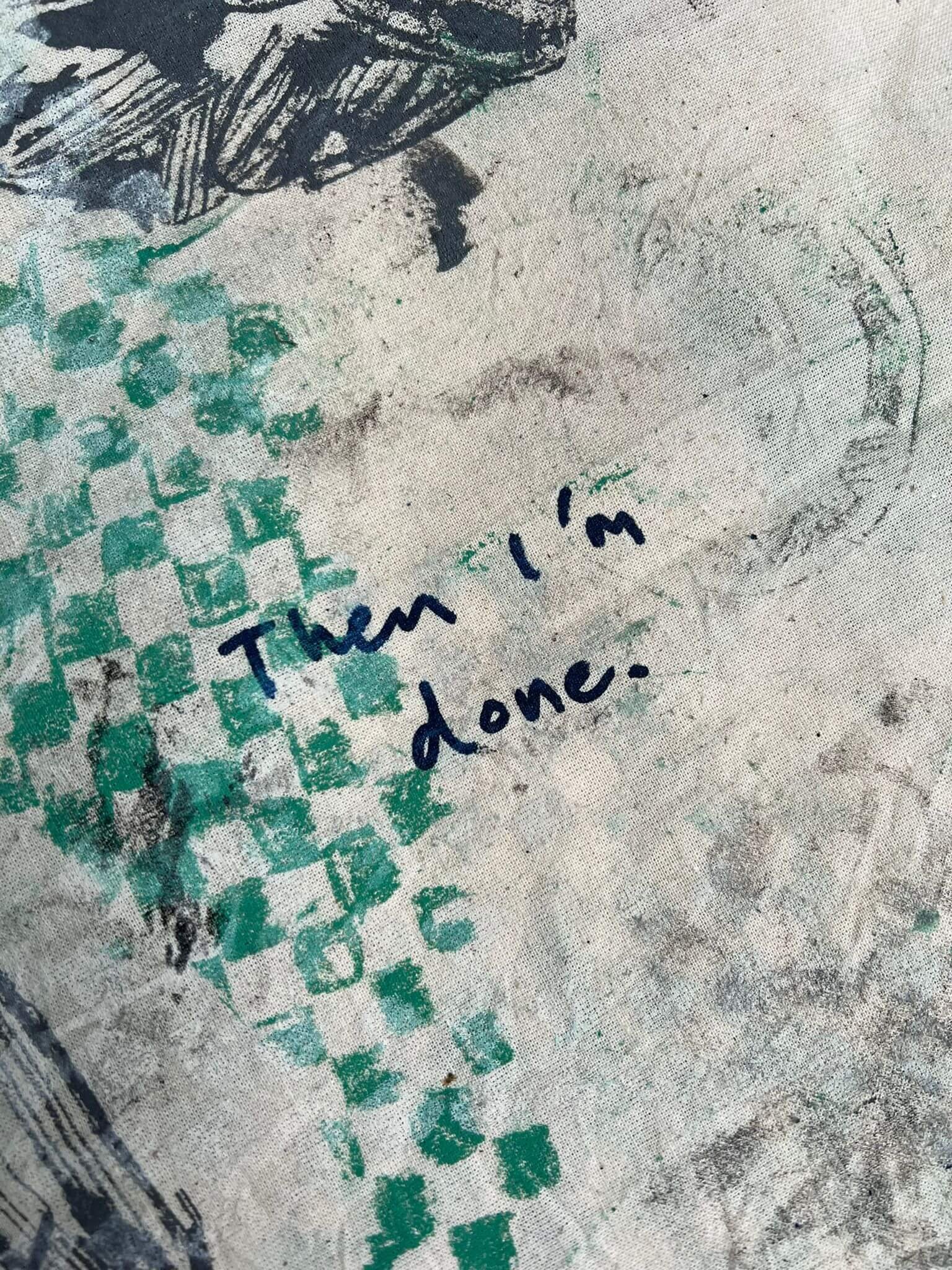

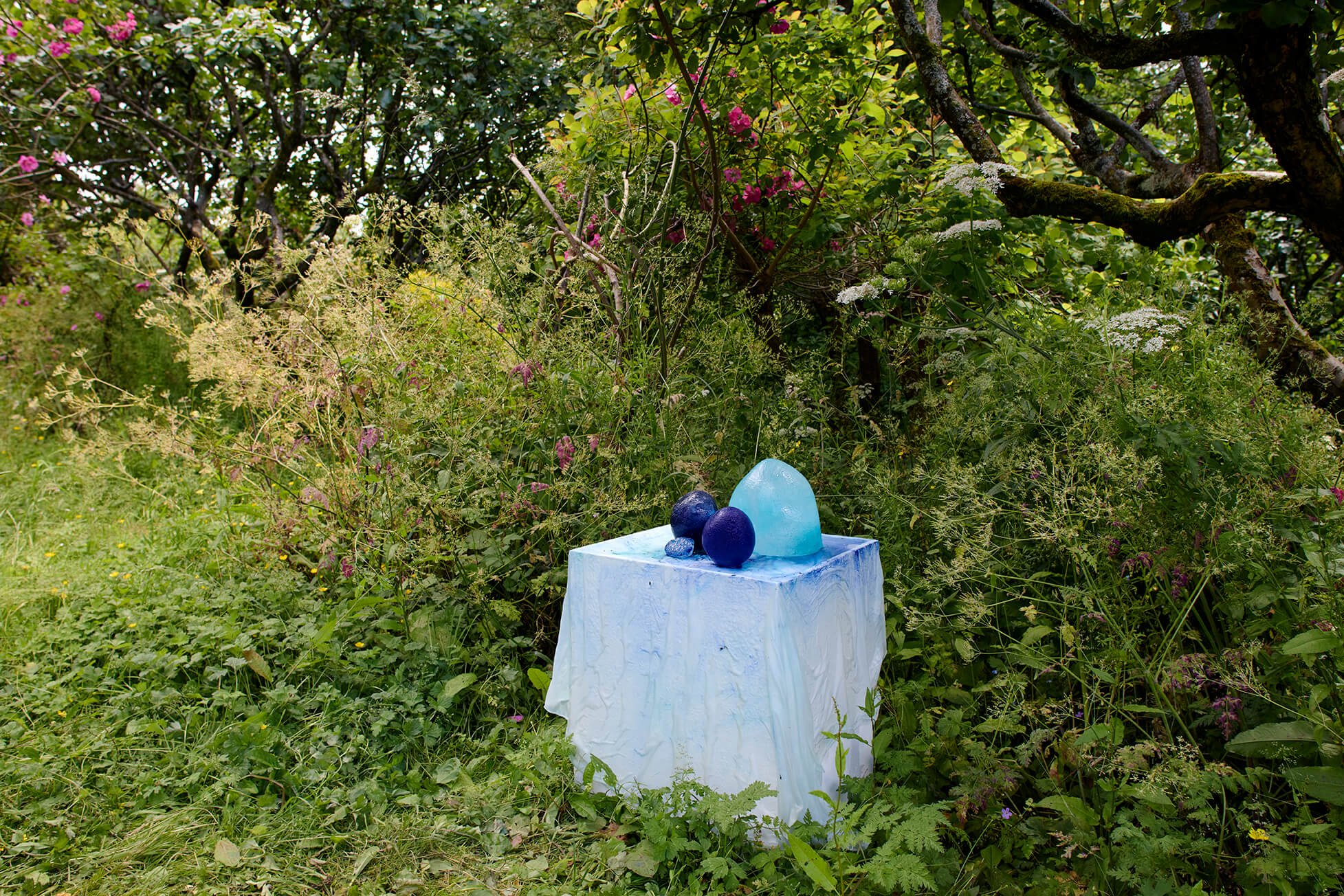




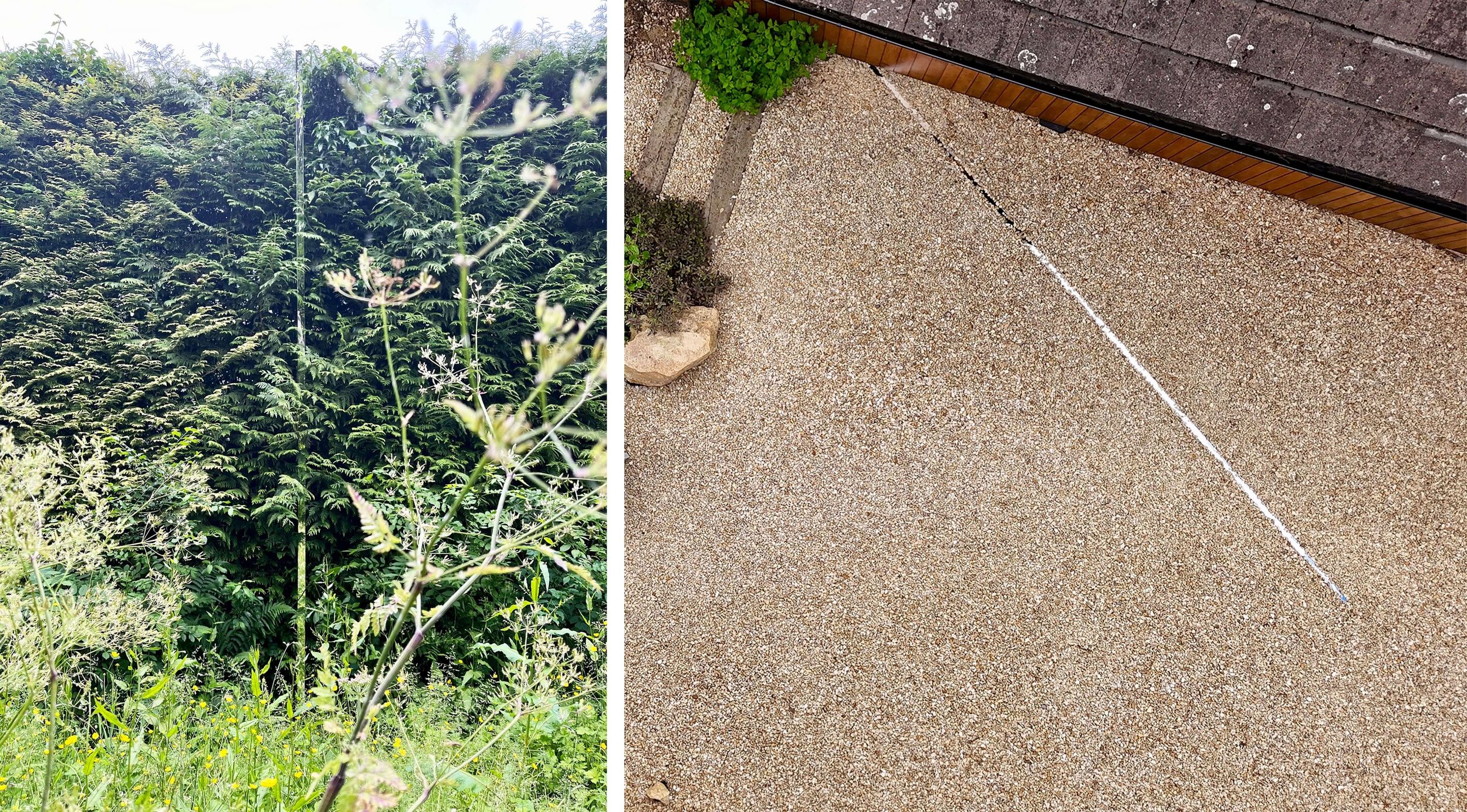
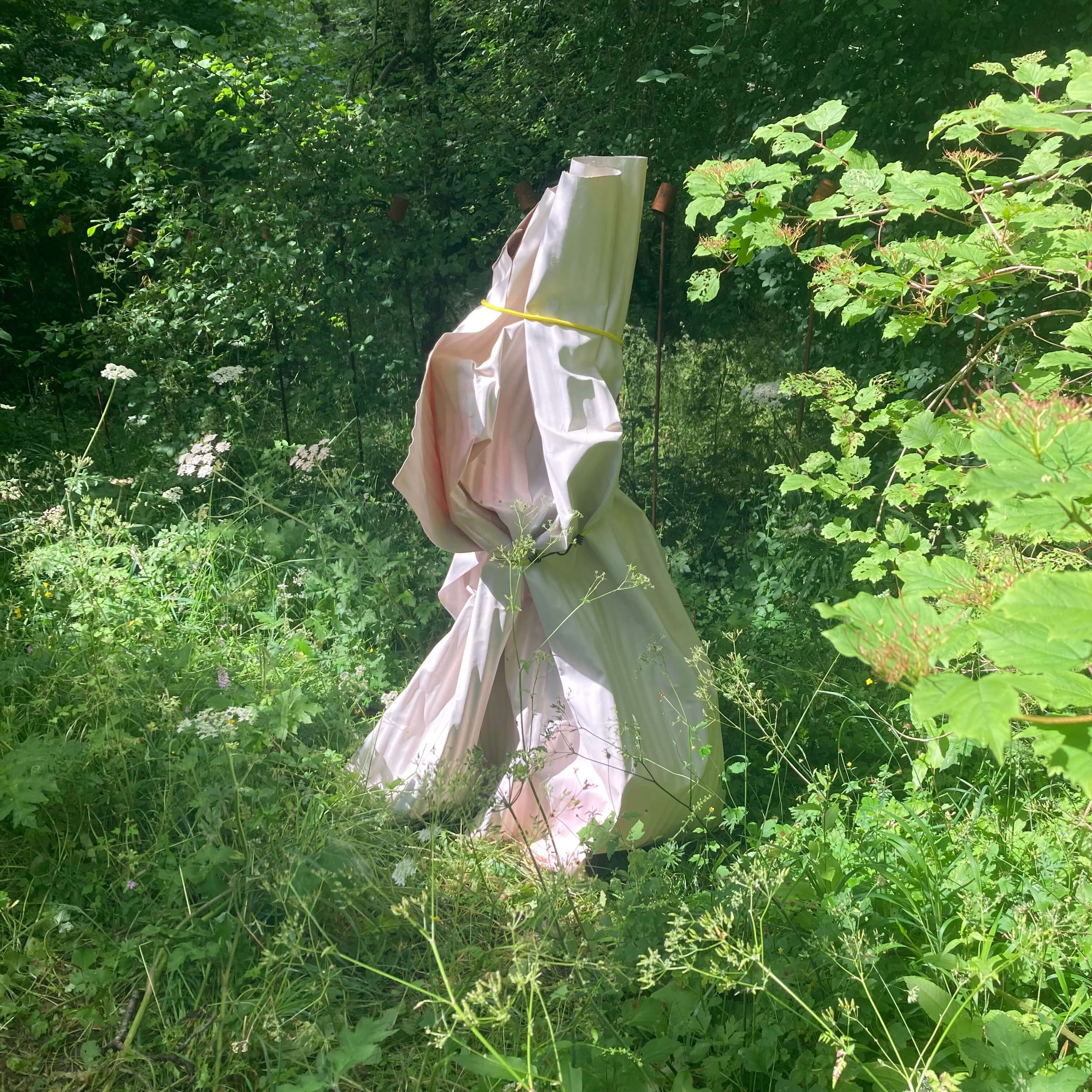











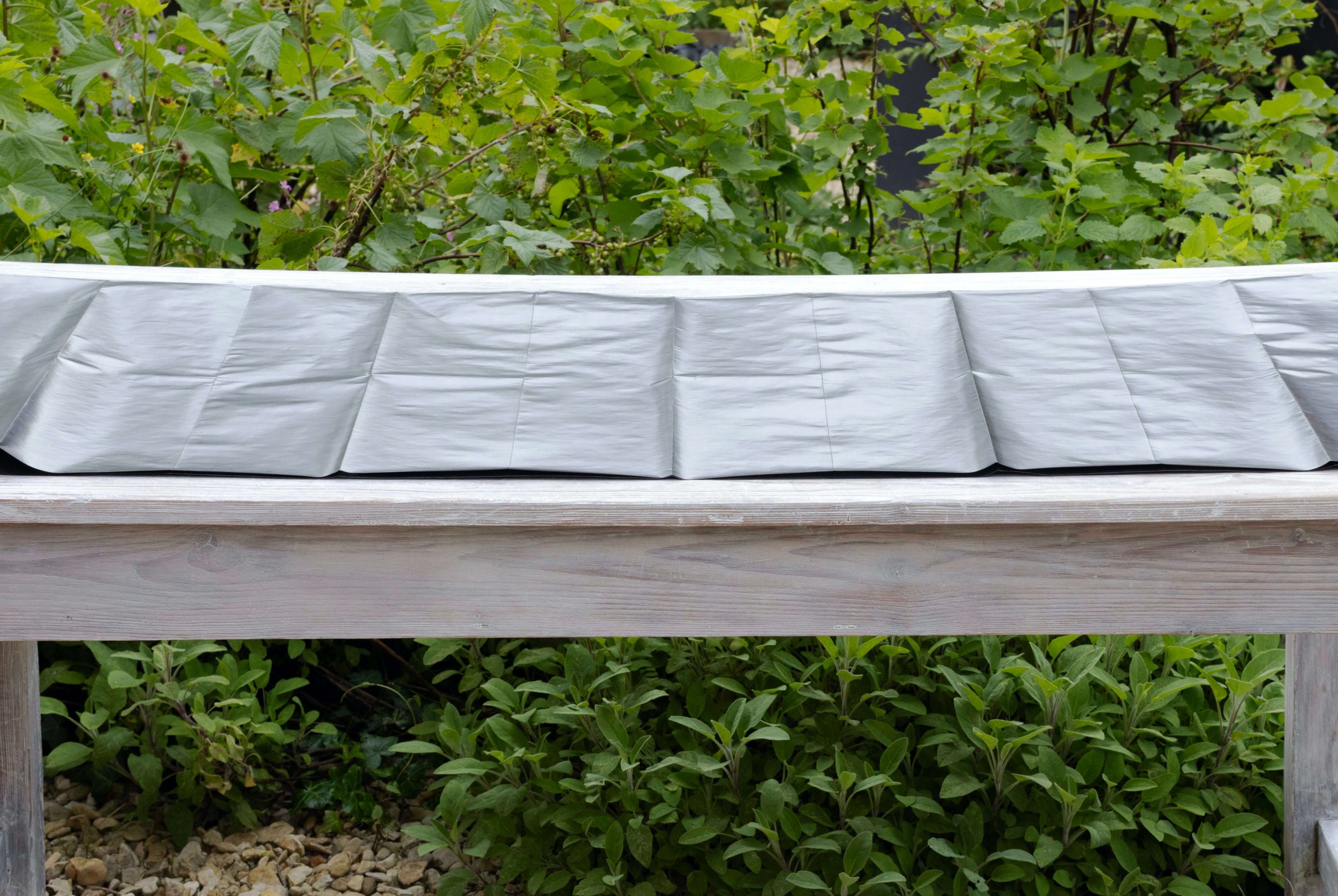
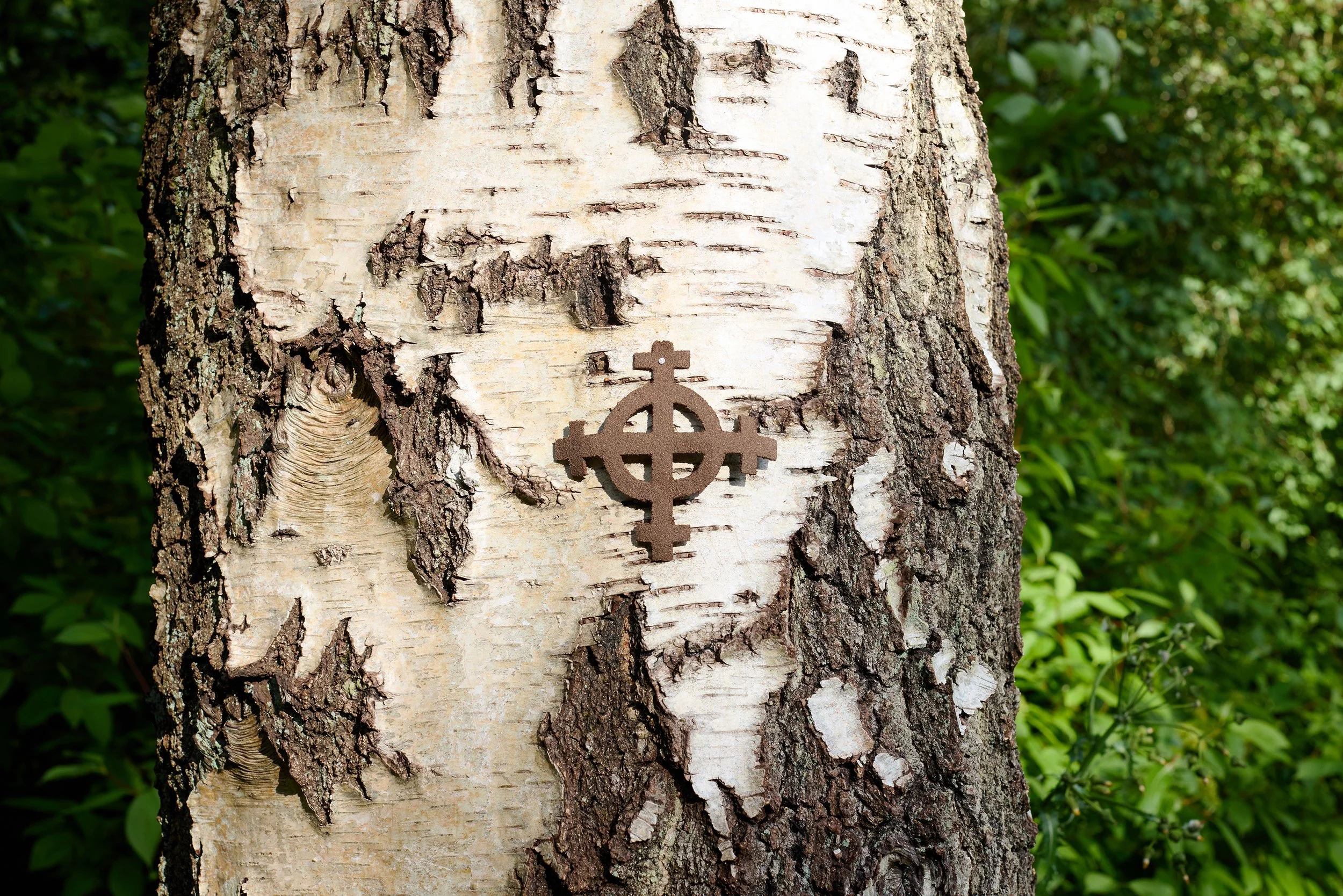
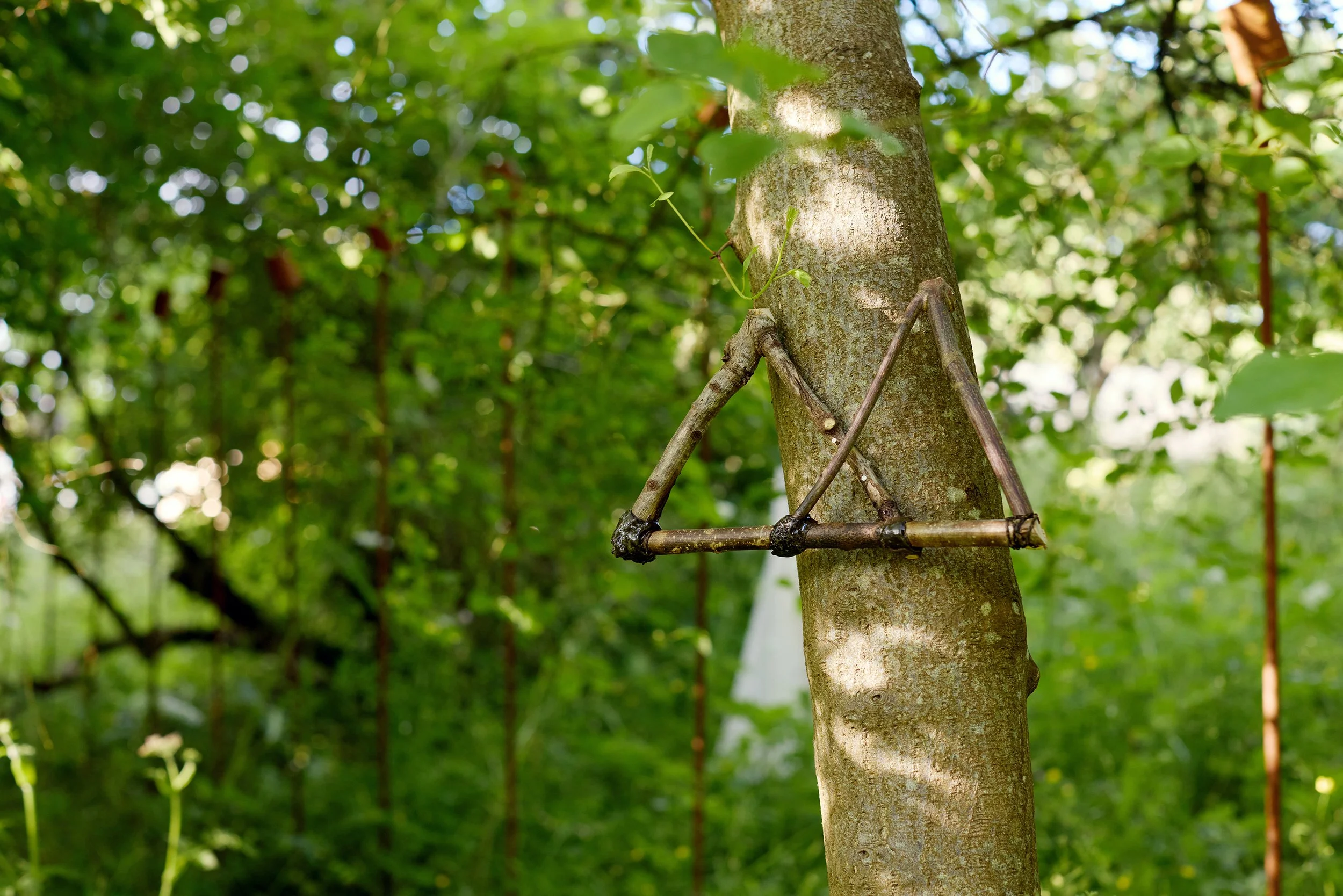

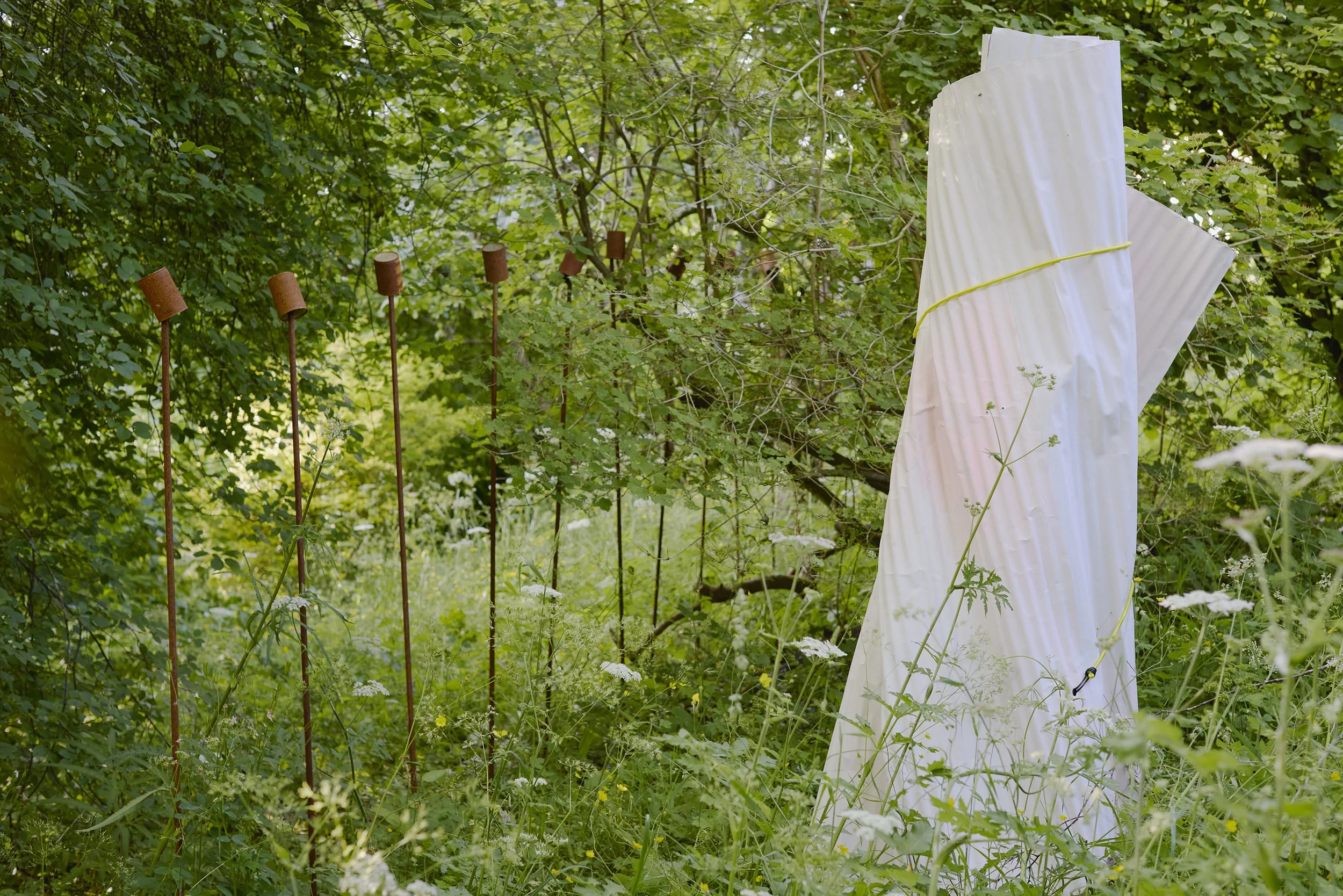
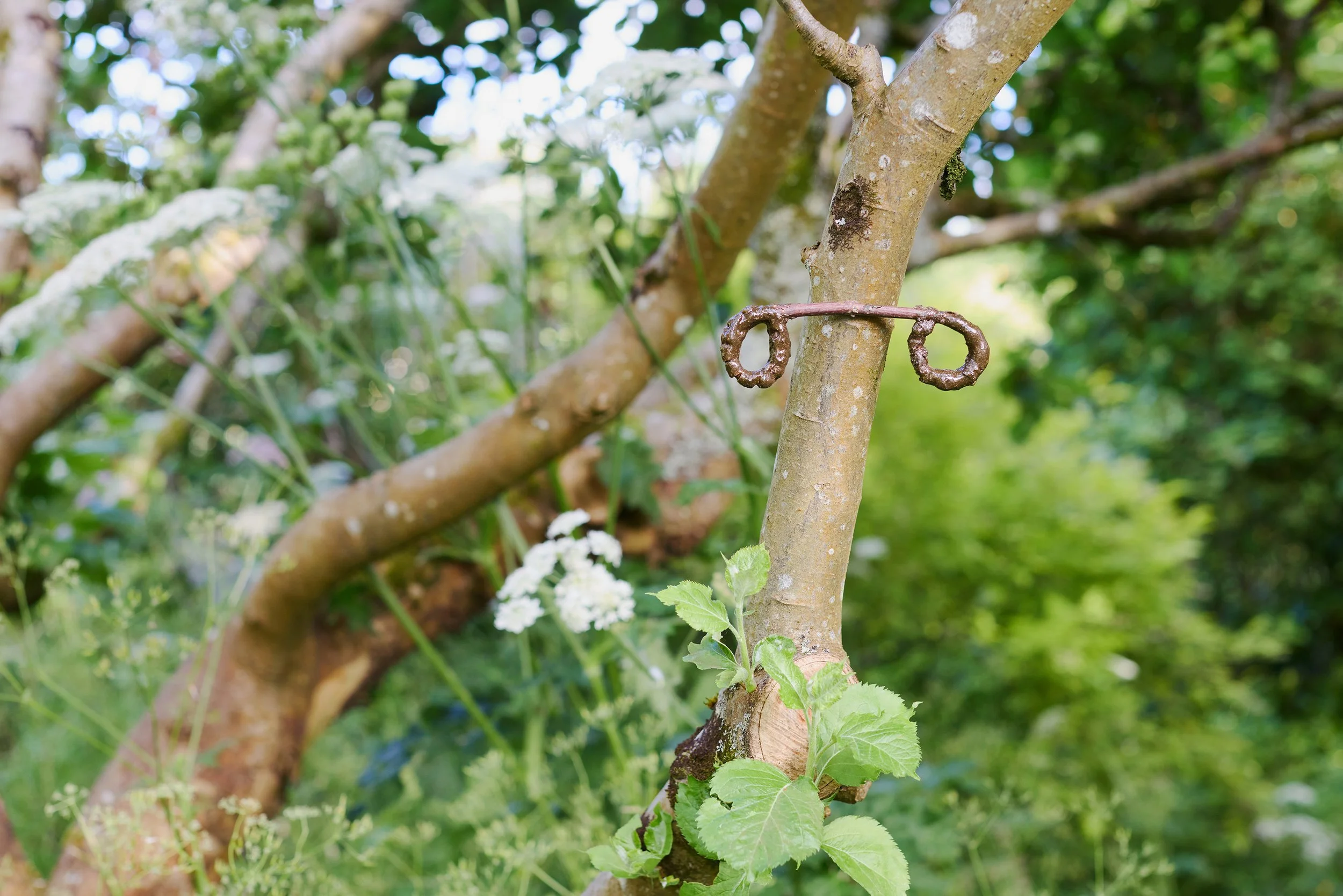

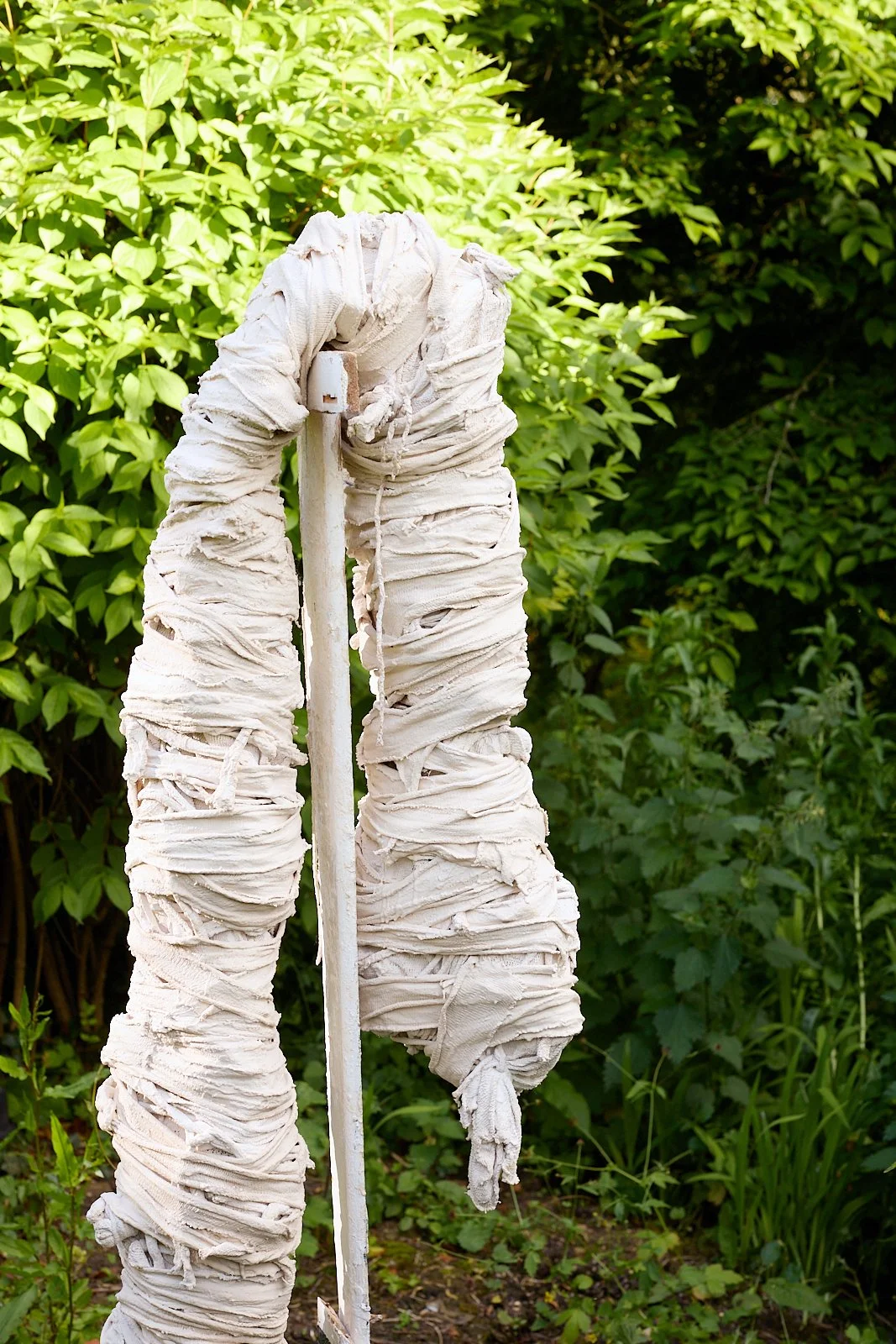
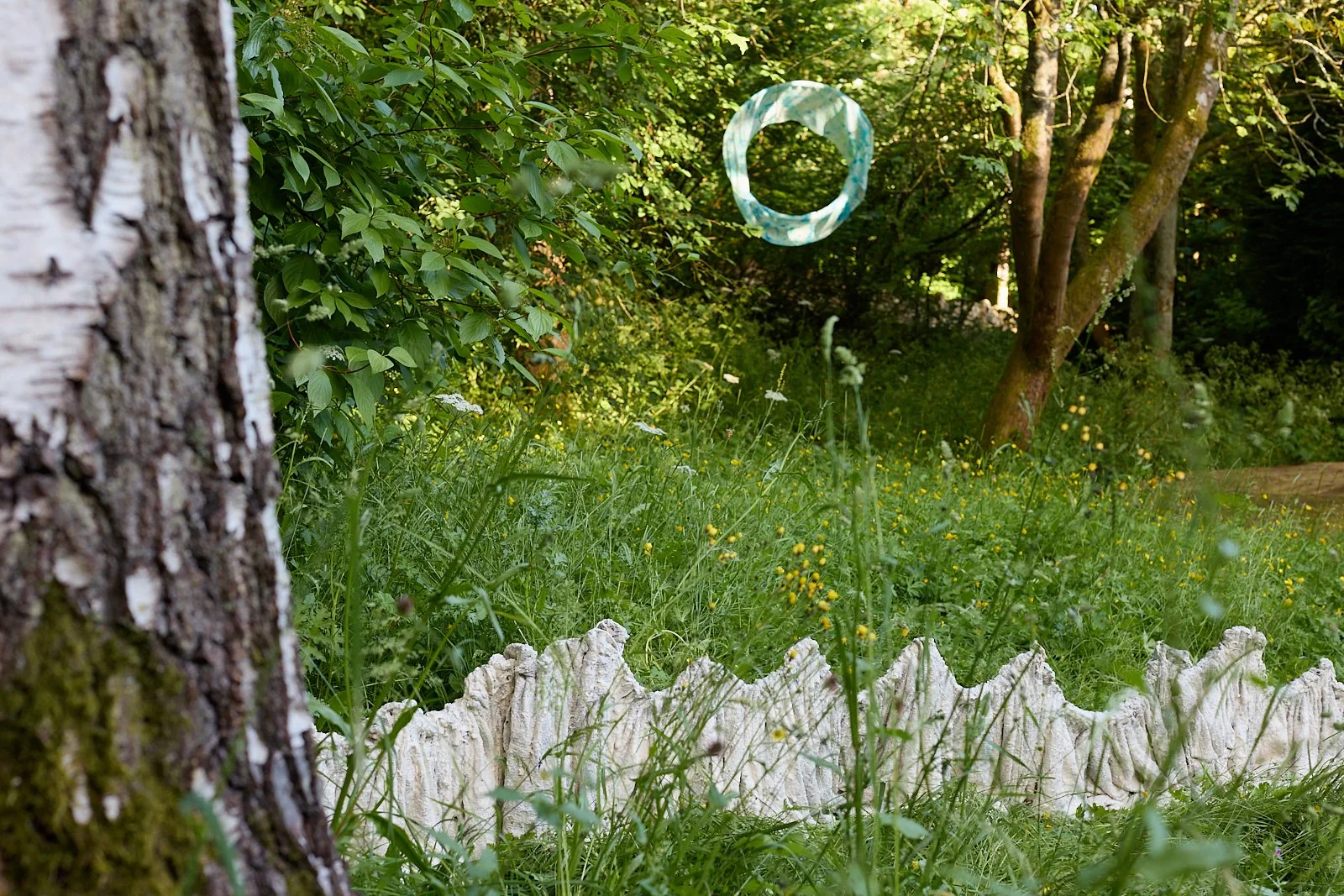

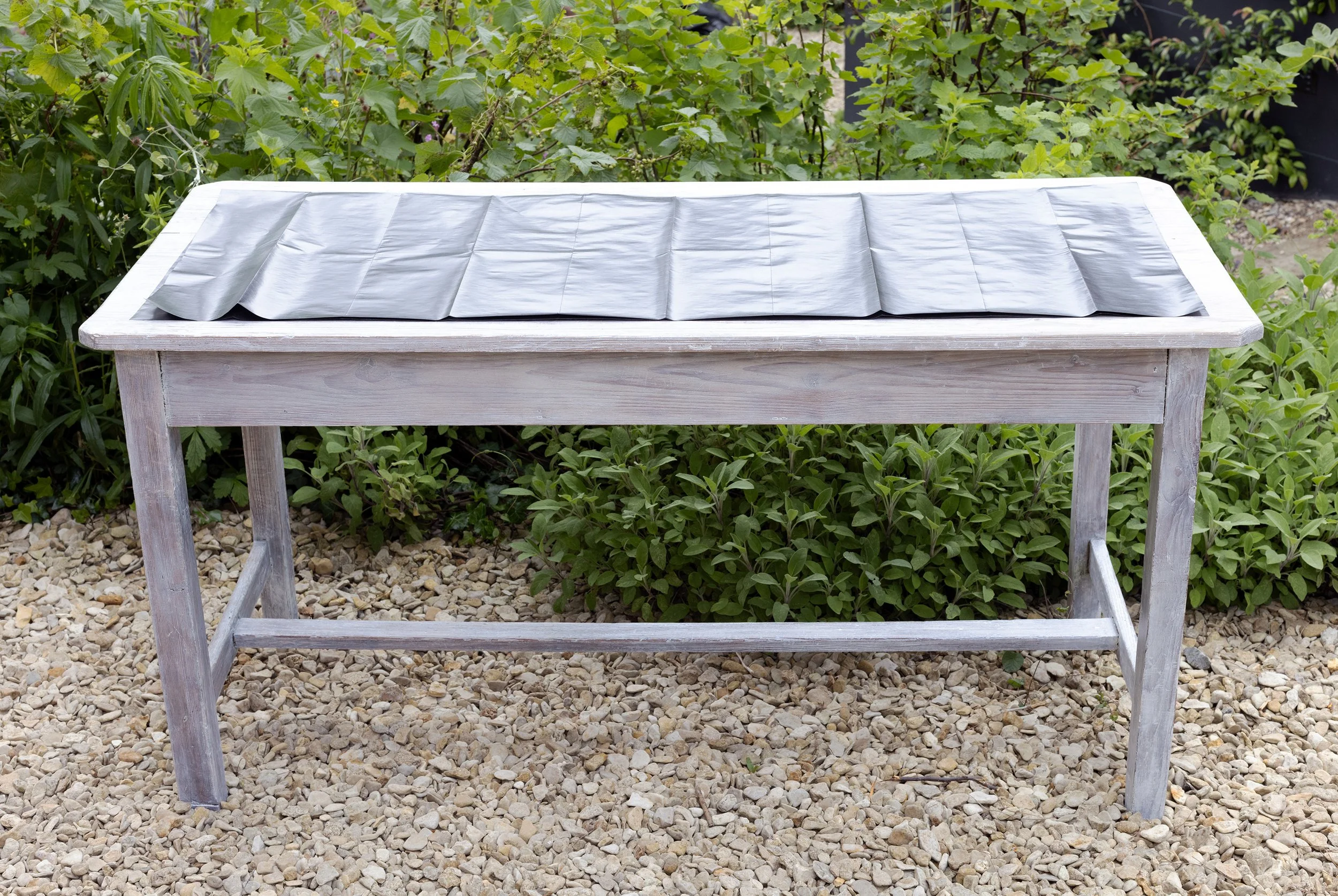
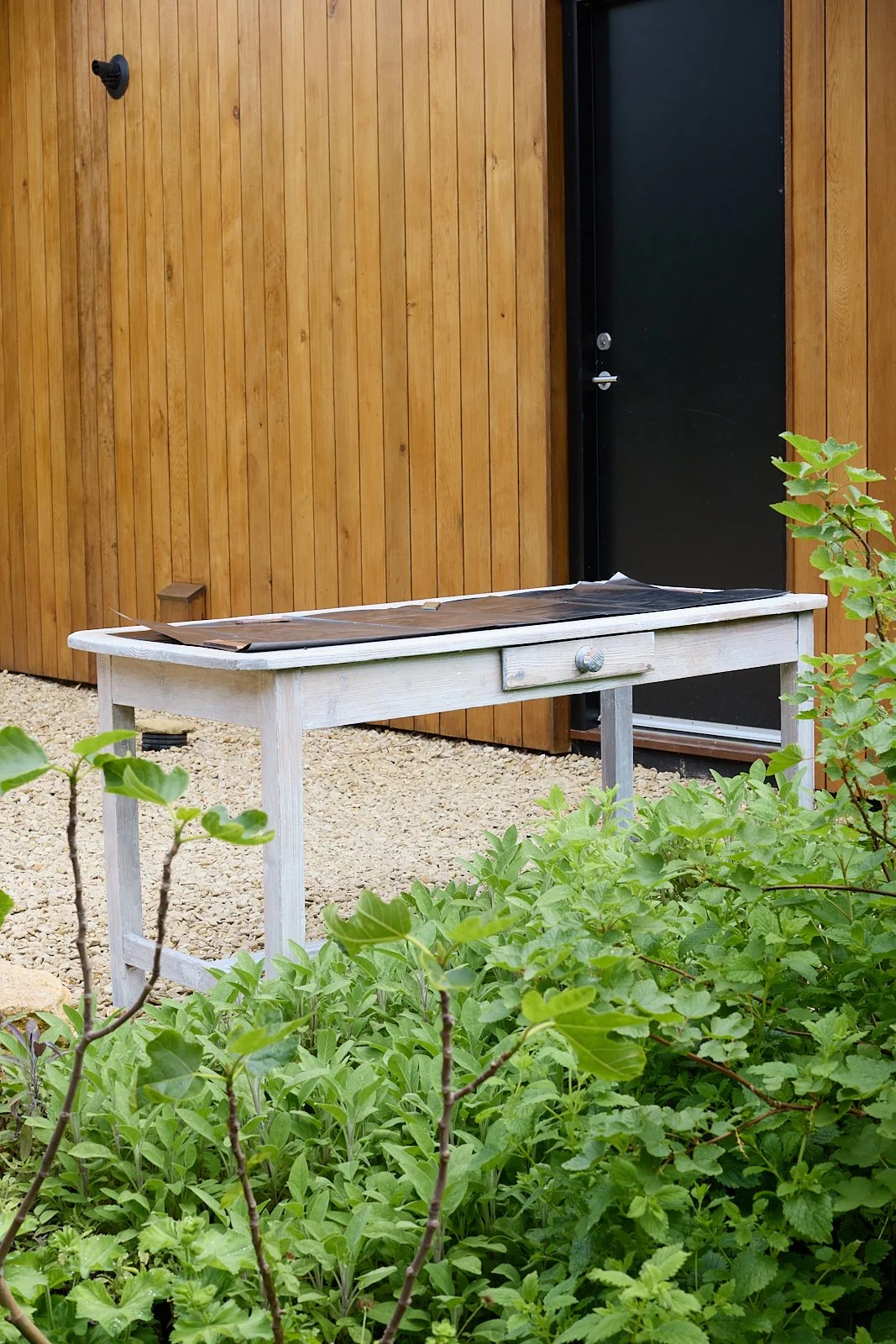
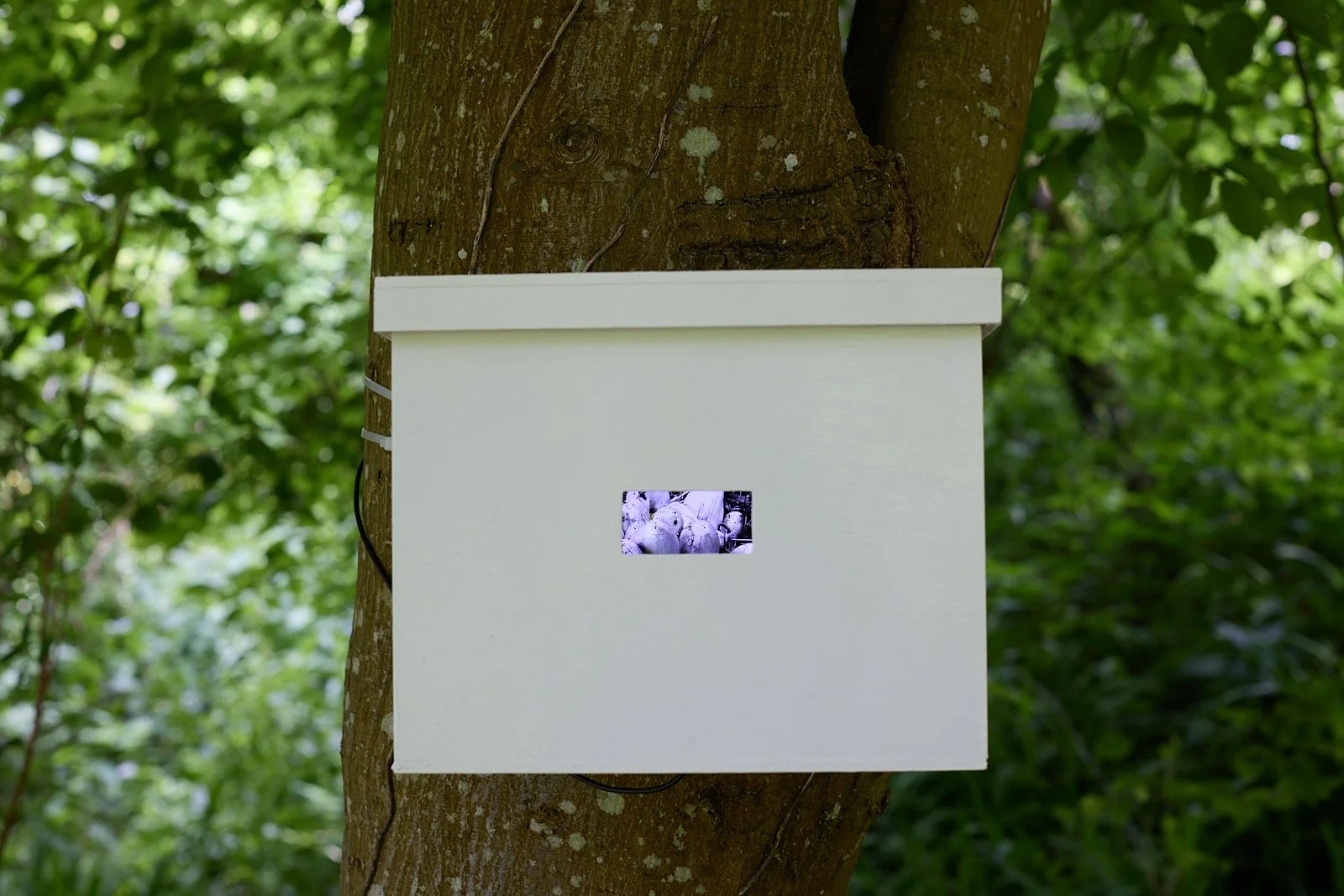
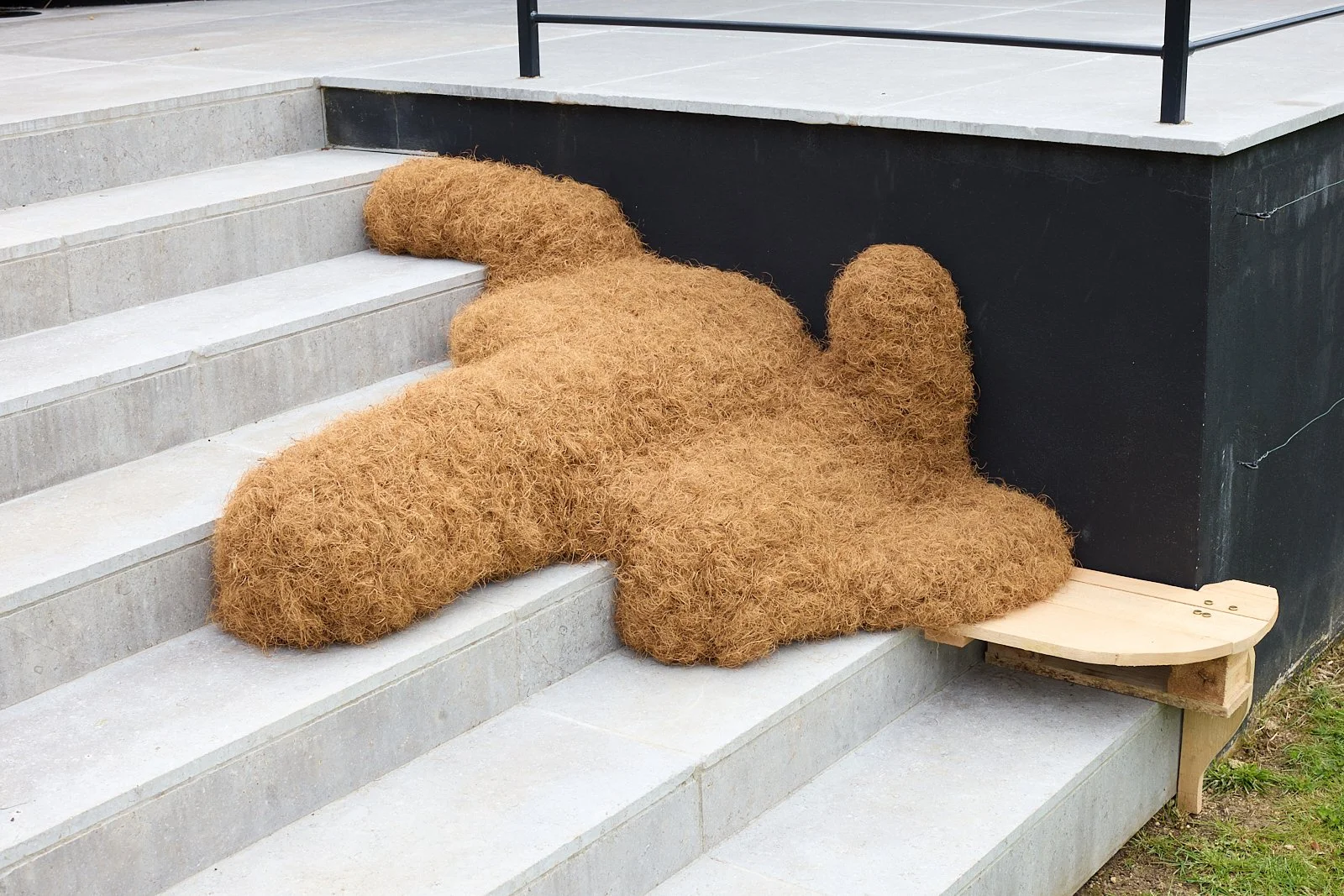
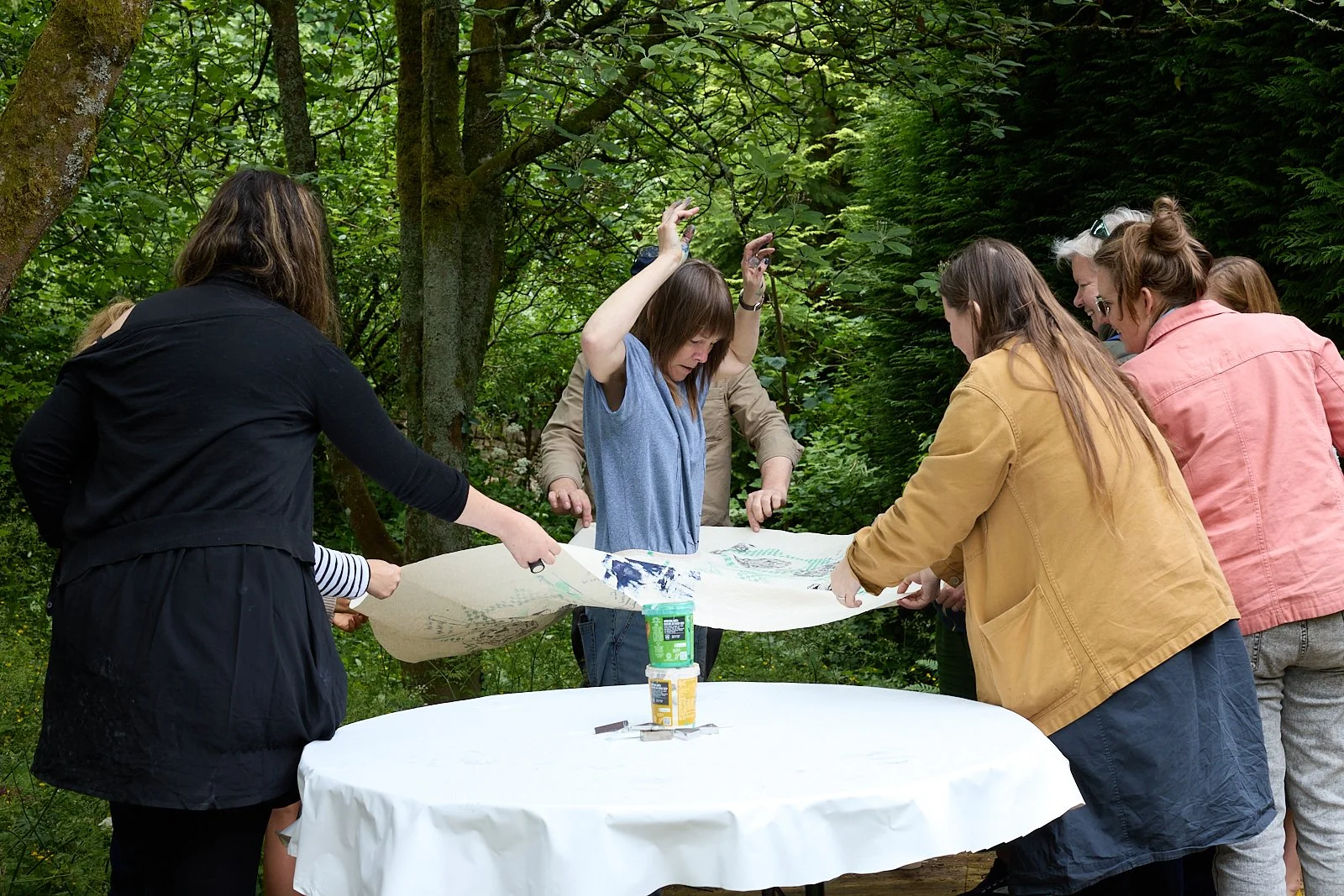
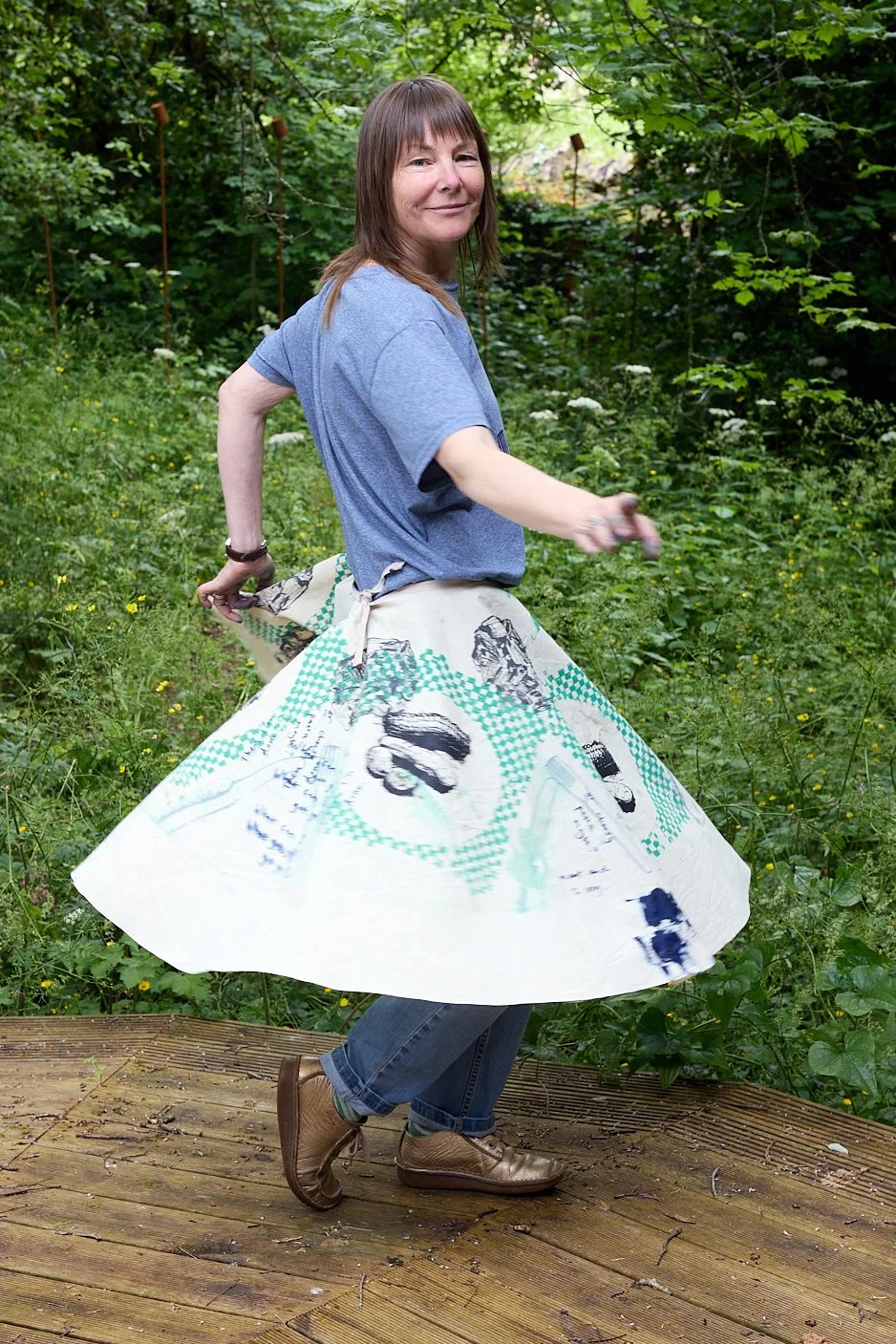

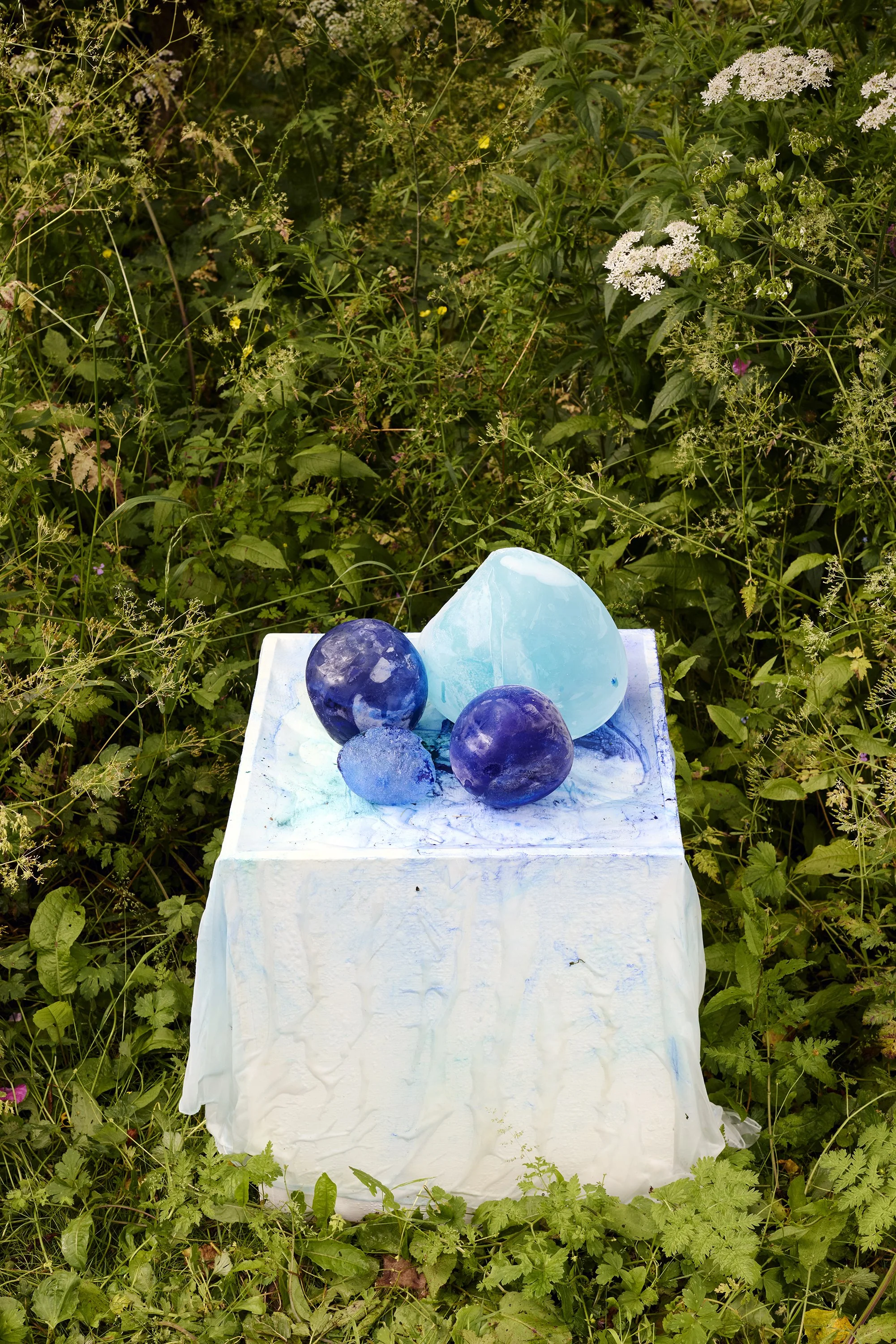

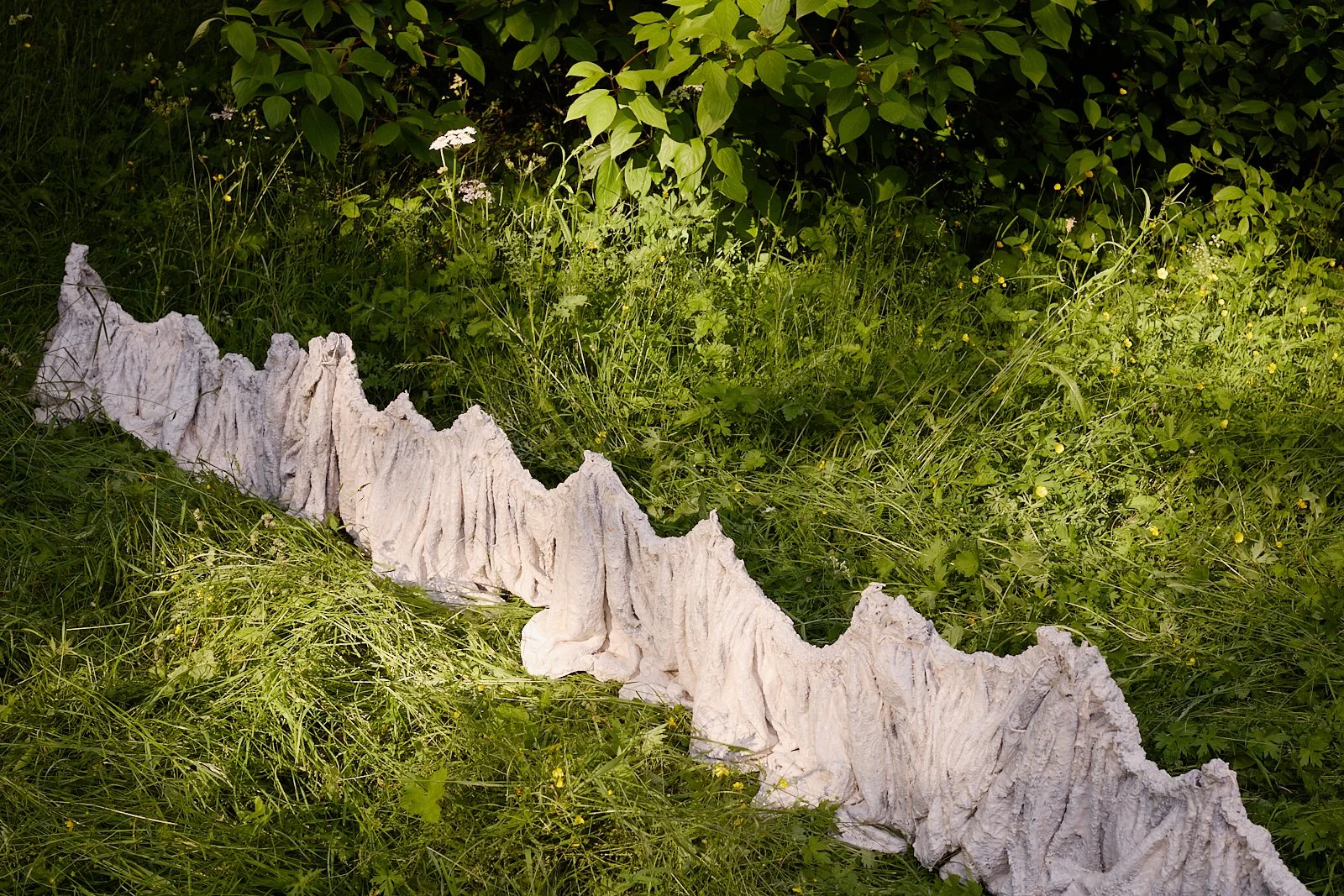
Underfoot, 2021
Water and ice are foundational to Abi's practice. The cyclical nature of water is reflected in her making methodology, through the recycling of materials and translation of old work into new. She sets up materials in environments where they are impacted by wind, warmth and time so that elemental interactions create the work.
Abi is a visual artist based in Bedfordshire, working predominantly in the fields of sculpture and drawing. She has a Masters in Fine Art and has exhibited her work internationally. She has recently been offered a place on the Arctic Circle Residency and will travel there in 2025.
Redwood, 2013
Lucinda’s background in painting, landscape design and oriental philosophy has led to a fascination with the raw elemental qualities of materials and informs a sculptural practice that accentuates the reality of constant change, undermining the idea of a fixed thing, object, entity or identity.
Lucinda studied at Edinburgh College of Art, Bath Academy of Art and Goldsmiths, University of London. She has exhibited internationally for many years with recent solo exhibitions in Germany (Stuttgart and Cologne, 2023) following solo shows at Newlyn Art Gallery and Black Swan Gallery (Frome) and two-man shows in London at Bartha Contemporary and RaumX (2021).
Architecture and post-industrial landscapes, fashion, modernist icons and design are key components in Sharon's visual arts practice. She is drawn towards those fragments and narratives that suggest the possibility for endless deconstruction and reconstruction and enjoys the 'in the moment' activation of space.
Sharon works with artists and curators on a wide range of site related projects in artist-run spaces, historical sites, vacant spaces and traditional galleries in Europe and the UK. Alongside these projects Sharon sustains and develops her practice through a residencies and site related research. Sharon is a Lecturer in Fine Art and has many years of experience working in gallery education and running workshops and creative programs in the community.
Complete tool, 2023
Emma Gregory’s playful practice deals with the business of human emotion, care & control, sexuality and the gendering of roles and expectations. She draws, prints and builds discomforting sculptures and restless installations with an enteric coating of humour, reusing the component parts of a piece several times over.
Emma is powered by collaboration and creates learning communities around her areas of interest - the development of artists, interdisciplinary approaches to visual arts research and the value of play. All of which is owed to a previous career as a programmer within multidisciplinary teams at Riverside Studios, Royal Festival Hall, Yorkshire Dance and The Bluecoat in the nineties and noughties, since when she has worked as a lecturer, technician, workshop leader, scenic artist and upholsterer.
Sandcastles, 2019
Underpinning Erika Trotzig’s sculptural practice are feelings of instability and vulnerability, a sense that everything can and will collapse. She makes deliberately un-monumental objects that play with and question the possibilities within the medium of sculpture itself, whilst investigating how personal experience can be communicated through form. Her works are humorous, un-heroic and absurd.
Erika Trotzig is a Swedish artist based in London. She has exhibited widely; highlights include a duo show at Fold Gallery in 2023 and group shows at Paradise Row (2022) and The Bomb Factory Art Foundation (2023) in London. She was a recipient of the Gilbert Bayes Award for emerging sculptors in 2023. She is a graduate from BA Fashion and MA Fine Art at Central Saint Martins, where she is also associate lecturer. For several years a had her own clothing label, making one off, handcrafted pieces which were shown internationally.
The belief in things disappearing, 2023
Jo Lathwood is an artist whose practice includes drawing, sculptural works, film and large installations, made for both gallery settings and the public realm. The starting point for many of her works is a response to a particular site, event, material or process.
Jo studied Fine Art Sculpture at the University of Brighton, graduating in 2006. She has a studio at Spike Island in Bristol and has been on the studio selection panel (2017-2022). Jo is currently on the Board of Trustees for BRICKS Bristol and is part of the EARTH art council at the University of Bristol. She has shown work in galleries around the UK and internationally.
Thief, 2024
Freya’s practice is site-responsive and often takes place, stories, archives, or collections as a starting point; working in conversation with different contexts, and materials. She works across media, employing unorthodox materials and incorporating historic processes to create new objects or interventions that share a language and connection to past practices; her hands echoing previous hands in the making.
Freya trained at Chelsea College of Art and the Royal College of Art. Her work is site-responsive and collaborative, she’s worked with diverse communities, from fishermen to opera singers to archaeologists, and many people in between. She’s exhibited and been commissioned widely, both internationally and in the UK.
Movement recycled, 2020
Alice works with found spaces and materials, performing interventions and actions that result in sculpture, installation, and a form of social documentary photography. She begins by identifying a zone of rigidity (a rule, a social code, a hard physical surface), then works into the space around it, rubbing up against everyday conventions until their obviousness disintegrates, playing with opposites till their hard edges loosen. Her work is sited both in and out of the gallery.
Alice is a founding member of Studio Voltaire Gallery and Arts Charity and runs the artist-led initiative The Hide Artist Retreat. Before completing her MA in Fine Art at the University of the West of England in 2020 she worked in design for television, film, and fashion. She is a recipient of the Gilbert Bayes Award from the Royal Society of Sculptors, the CAS Emerging Sculptor Development Award 2023, and is a Spike Island Associate.










